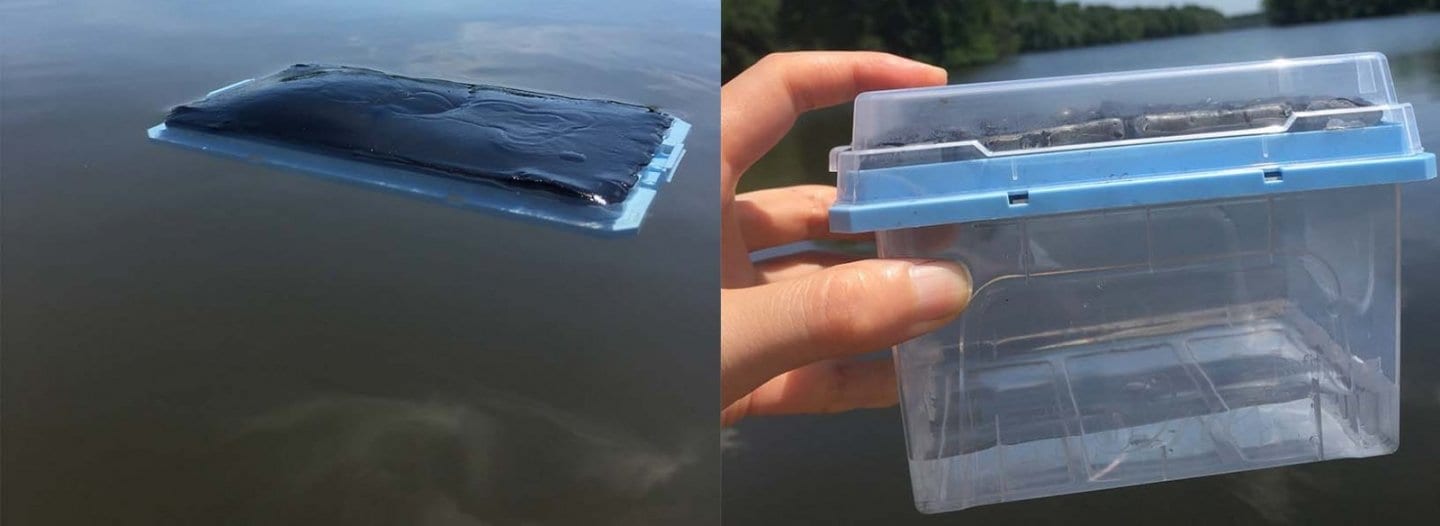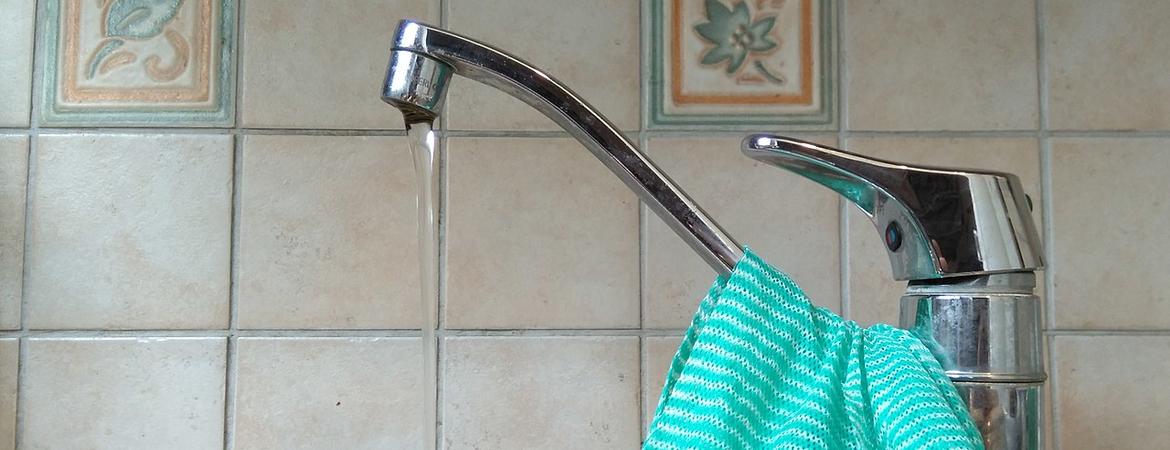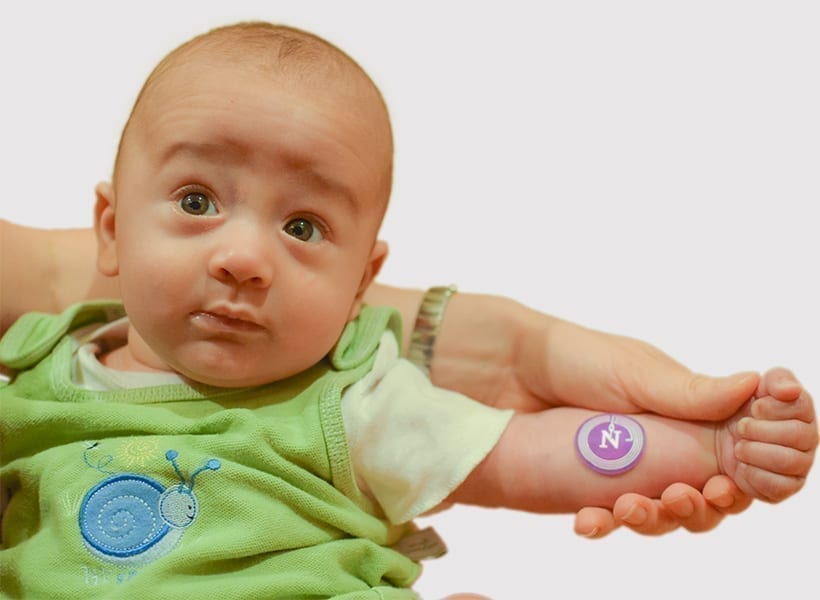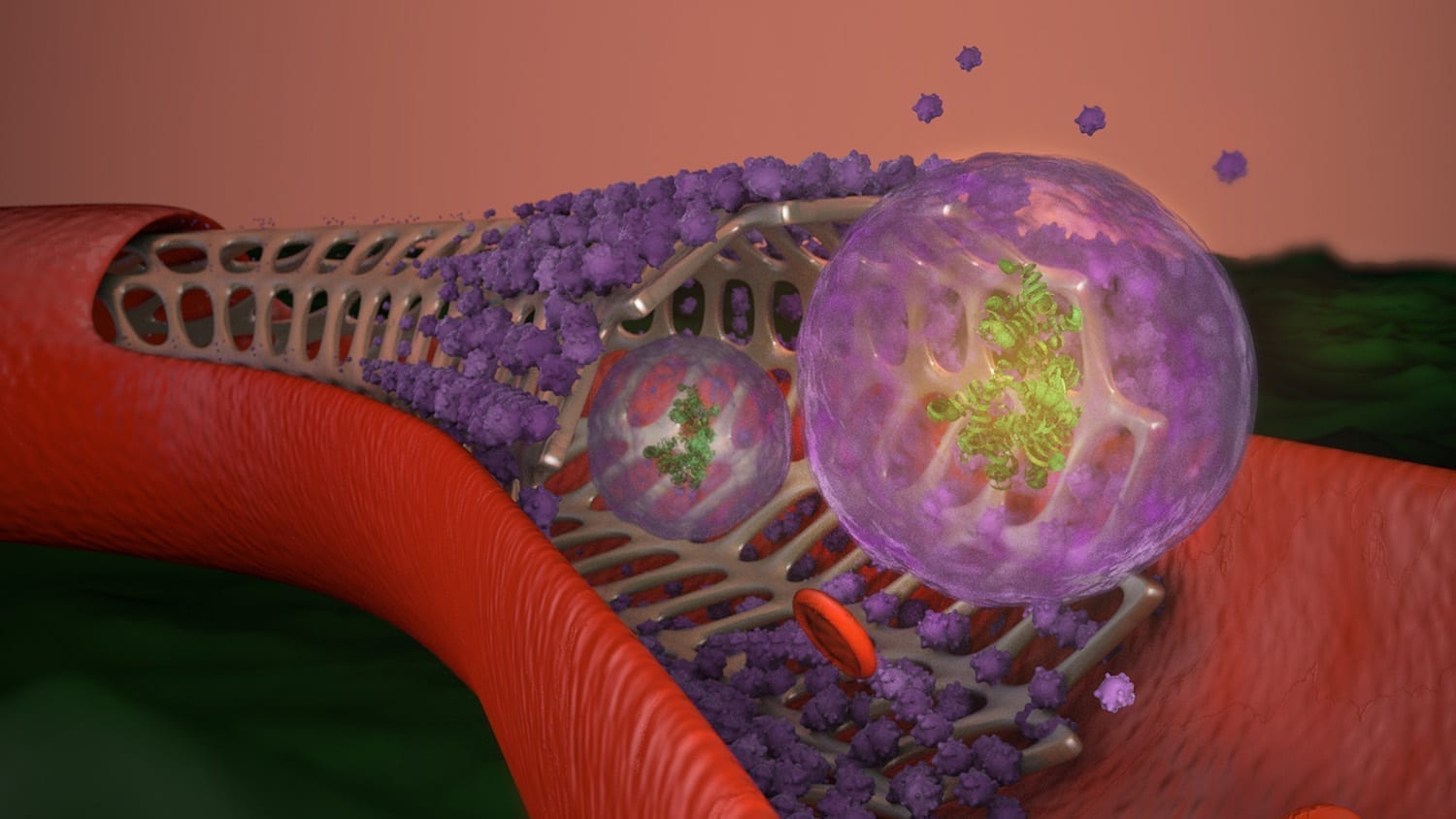
In a study conducted at Princeton University, researchers placed the gel in lake water where it absorbed pure water, leaving contaminants behind. The researchers then placed the gel in the sun, where solar energy heated up the gel, causing the discharge of the pure water into the container.
Image credit: Xiaohui Xu
A new invention that uses sunlight to drive water purification could help solve the problem of providing clean water off the grid.
The device resembles a large sponge that soaks up water but leaves contaminants – like lead, oil and pathogens – behind. To collect the purified water from the sponge, one simply places it in sunlight. The researchers described the device in a paper published this week in the journal Advanced Materials.
The inspiration for the device came from the pufferfish, a species that takes in water to swell its body when threatened, and then releases water when danger passes, said the device’s co-inventor Rodney Priestley, the Pomeroy and Betty Perry Smith Professor of Chemical and Biological Engineering, and Princeton’s vice dean for innovation.
“To me, the most exciting thing about this work is it can operate completely off-grid, at both large and small scales,” Priestley said. “It could also work in the developed world at sites where low-cost, non-powered water purification is needed.”
Xiaohui Xu, a Princeton presidential postdoctoral research fellow in the Department of Chemical and Biological Engineering and co-inventor, helped develop the gel material at the heart of the device.
“Sunlight is free,” Xu said, “and the materials to make this device are low-cost and non-toxic, so this is a cost-effective and environmentally friendly way to generate pure water.”
The authors noted that the technology delivers the highest passive solar water-purification rate of any competing technology.
One way to use the gel would be to place it in a water source in the evening and the next day place it in the sunlight to generate the day’s drinking water, Xu said.
The gel can purify water contaminated with petroleum and other oils, heavy metals such as lead, small molecules, and pathogens such as yeast. The team showed that the gel maintains its ability to filter water for at least ten cycles of soaking and discharge with no detectable reduction in performance. The results suggest that the gel can be used repeatedly.
To demonstrate the device in real-world conditions, Xu took the device to Lake Carnegie on the Princeton University campus.
Xu placed the gel into the cool water (25 degree Celsius, or 77 degrees Fahrenheit) of the lake, which contains microorganisms that make it unsafe to drink, and let it soak up the lake water for an hour.
At the end of the hour, Xu lifted the gel out of the water and set it on top of a container. As the sun warmed the gel, pure water trickled into the container over the next hour.
The device filters water much more quickly than existing methods of passive solar-powered water purification methods, the researchers said. Most other solar-powered approaches use sunlight to evaporate water, which takes much longer than absorption and release by the new gel.
Other water filtration methods require electricity or another source of power to pump water through a membrane. Passive filtration via gravity, as with typical household countertop filters, requires regular replacement of filters.
At the heart of the new device is a gel that changes depending on temperature. At room temperature, the gel can act as a sponge, soaking up water. When heated to 33 degrees Celsius (91 degrees Fahrenheit), the gel does the opposite – it pushes the water out of its pores.
To demonstrate the device in real-world conditions, Xu took the device to Lake Carnegie on the Princeton University campus.
Xu placed the gel into the cool water (25 degree Celsius, or 77 degrees Fahrenheit) of the lake, which contains microorganisms that make it unsafe to drink, and let it soak up the lake water for an hour.
At the end of the hour, Xu lifted the gel out of the water and set it on top of a container. As the sun warmed the gel, pure water trickled into the container over the next hour.
The device filters water much more quickly than existing methods of passive solar-powered water purification methods, the researchers said. Most other solar-powered approaches use sunlight to evaporate water, which takes much longer than absorption and release by the new gel.
Other water filtration methods require electricity or another source of power to pump water through a membrane. Passive filtration via gravity, as with typical household countertop filters, requires regular replacement of filters.
At the heart of the new device is a gel that changes depending on temperature. At room temperature, the gel can act as a sponge, soaking up water. When heated to 33 degrees Celsius (91 degrees Fahrenheit), the gel does the opposite – it pushes the water out of its pores.
Original Article: Low-cost solar-powered water filter removes lead, other contaminants
More from: Princeton University
The Latest Updates from Bing News & Google News
Go deeper with Bing News on:
Solar-powered water filter
- Wave of innovation aims to make desalination sustainable
But Gasson says the availability of low-cost solar power is driving a ... million to support the XPrize Water Scarcity competition. The main focuses of innovation, Gasson says, are new materials for ...
- Meet the Trash-Eating Robots Cleaning Lake Tahoe and Beyond
We got face-to-face with some of The Searial Cleaners' trash-collecting robots patrolling Lake Tahoe to learn about how they work and how they're helping battle pollution beyond just cleaning up.
- Where Is Everybody in Our Universe?
In Exoplanets, astronomer Michael Summers and physicist James Trefil explore remarkable recent discoveries: planets revolving around pulsars, planets made of diamond, planets that are mostly water, ...
- The Best Well Water Filtration Systems for a Cleaner Supply
It’s easier when you know which contaminants are in your water, as different filtration systems filter out different ... to conventional products, solar solutions, and environmental topics.
- How to take pictures of the solar eclipse: Use specials filter, glasses
According to NASA, "you'll need to use a special solar filter to protect your camera, just as you’ll need a pair of solar viewing glasses (also called eclipse glasses) to protect your eyes.
Go deeper with Google Headlines on:
Solar-powered water filter
[google_news title=”” keyword=”solar-powered water filter” num_posts=”5″ blurb_length=”0″ show_thumb=”left”]
Go deeper with Bing News on:
Passive solar water-purification
- Harold Halibut review: a sweet, restrained story about finding your way home
Harold Halibut review A lovely looking game with a sweet, restrained story, Harold Halibut is funny and charming. It's also probably a bit too long for its own good. Developer: Sl ...
- Cloud control: Humanity’s never-ending quest to control the weather
For over a century, we’ve turned to technology in an attempt to control the weather. Are today’s geoengineering proposals any better?
- 10 Summer House Items Buyers Never Regret
As the weather warms up, you might be thinking it's time to book some much needed rest and relaxation. Check Out: 10 Best US Vacation Destinations for Retirees on a Budget Read More: How To Get ...
- 100 Genius Ways To Spend, Save and Invest Your Money in 2024
From Amazon to Etsy and everything in between, each day brings fresh opportunities to splurge, overspend and buy things you don't need and barely want just because you can. Check Out: 7 Things ...
- New Desalination Technology Promises Freshwater Cheaper Than Tap Water
In a world where access to clean drinking water is becoming increasingly scarce, a team of engineers from MIT and Shanghai Jiao Tong University in China have developed a game-changing solution. Their ...
Go deeper with Google Headlines on:
Passive solar water-purification
[google_news title=”” keyword=”passive solar water-purification” num_posts=”5″ blurb_length=”0″ show_thumb=”left”]










